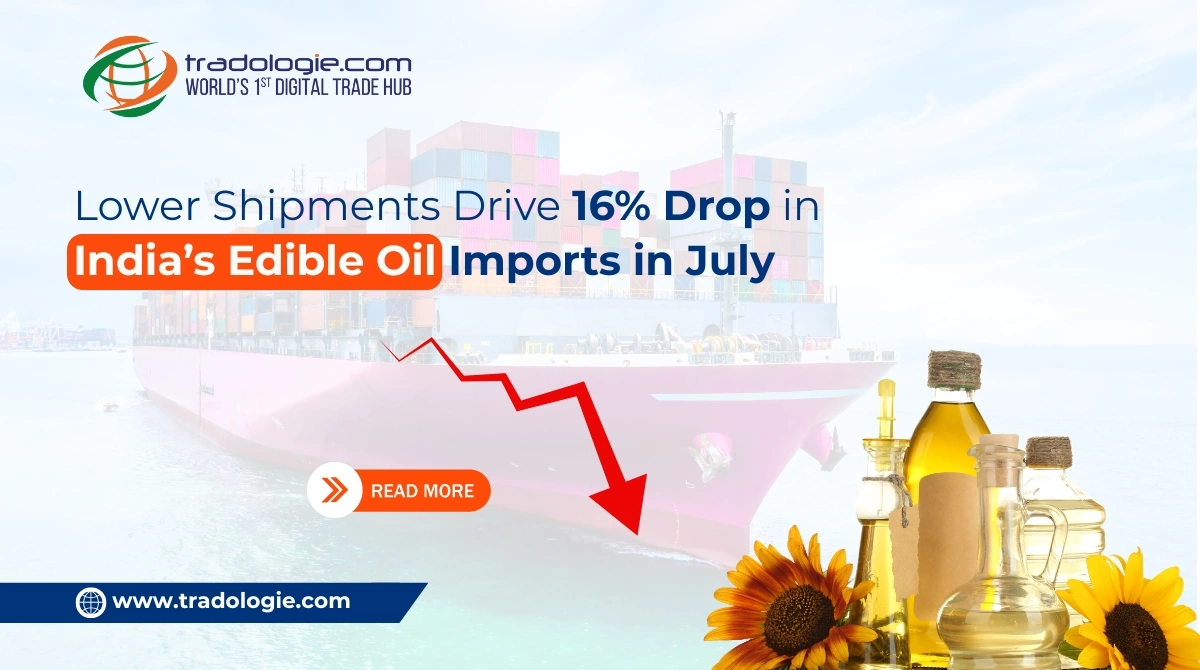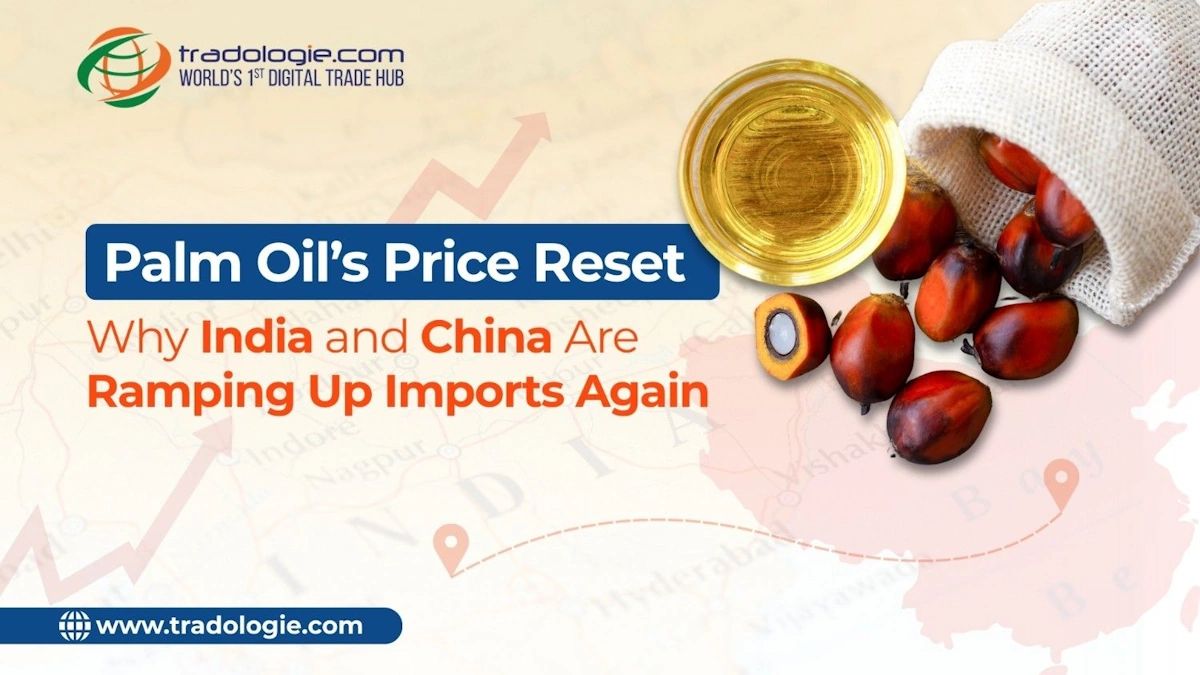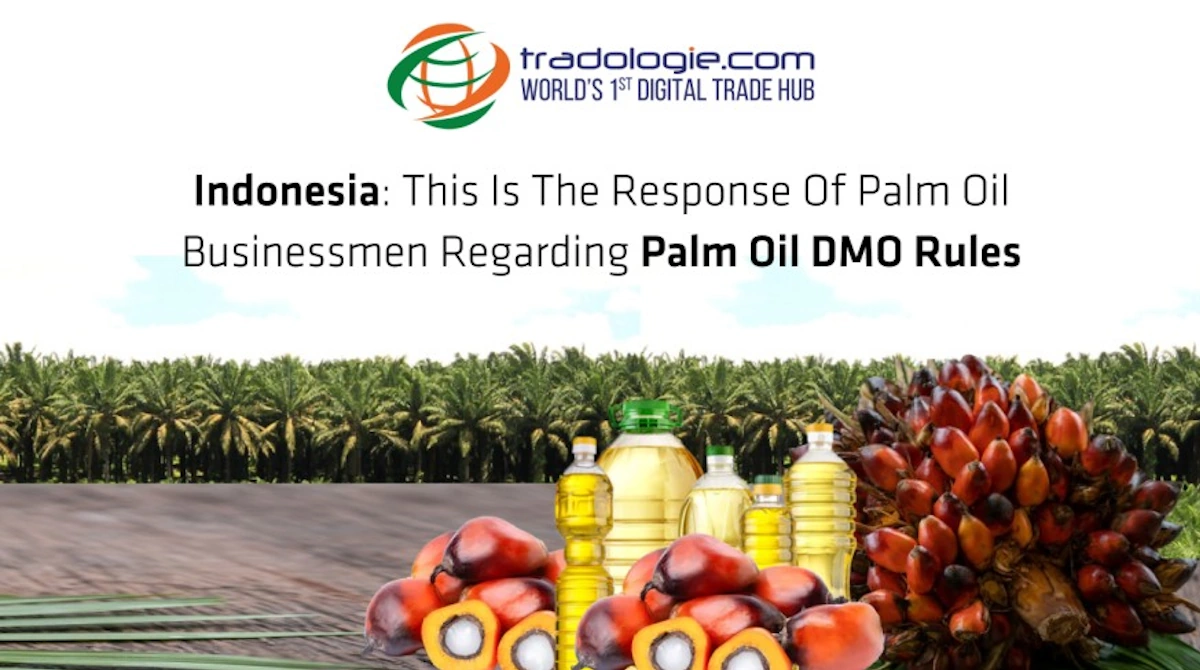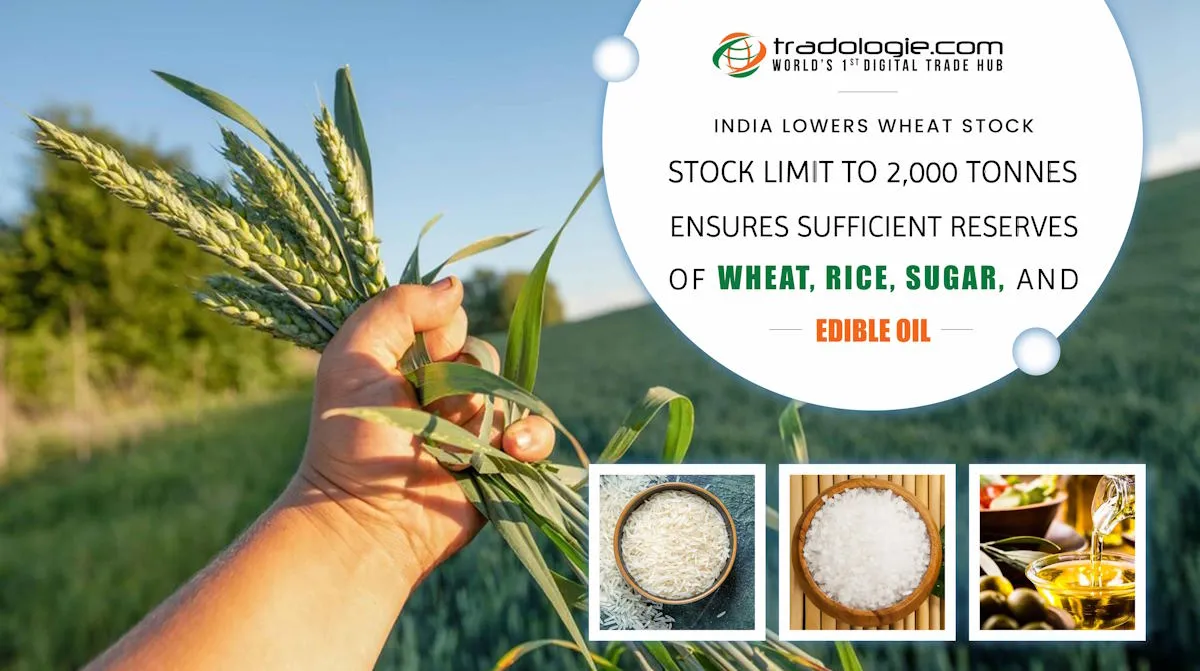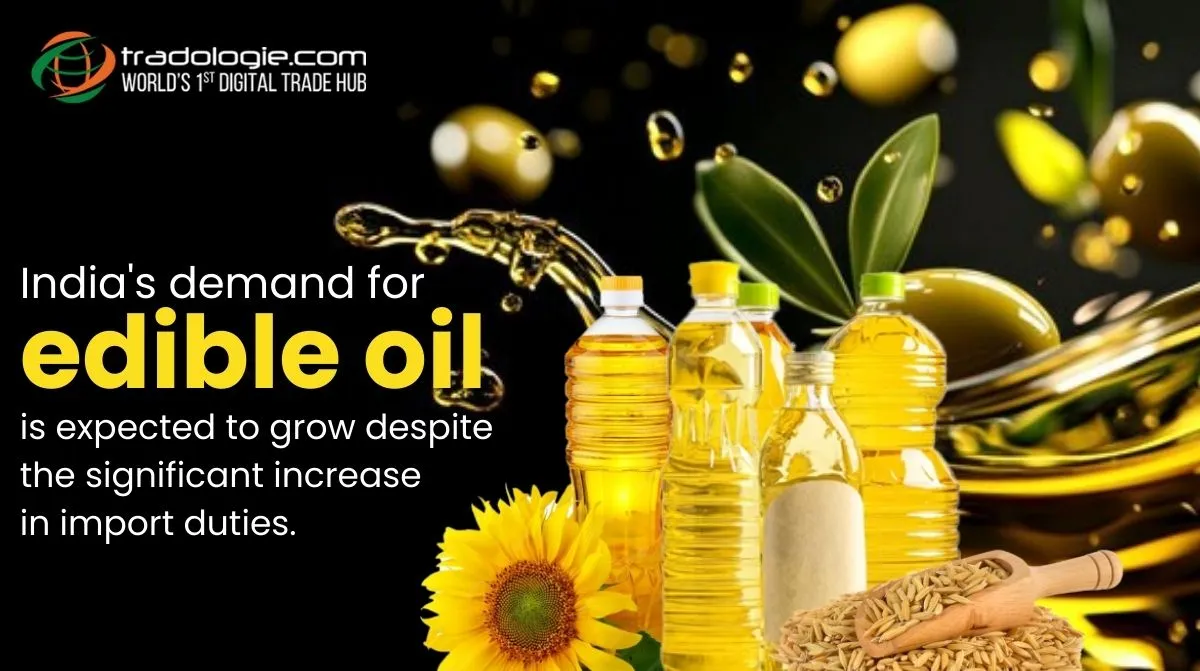India’s edible oil imports fell by 16% year-on-year in July, sliding to 15.48 lakh tonnes, as lower palm and sunflower oil shipments weighed on the trade balance. The contraction, though appearing steep, underscores a deliberate recalibration in sourcing strategies driven by import duty adjustments and domestic policy alignment rather than demand weakness.
A Policy-Induced Shift in Import Mix
The dramatic decline in refined palmolein imports was the most telling indicator. Volumes collapsed to a negligible 5,000 tonnes in July compared with over 1.3 lakh tonnes in the same month last year. Crude palm oil imports also moderated to 8.51 lakh tonnes, while sunflower oil shipments slipped to 2 lakh tonnes from nearly double that figure last July.
The widening of the duty differential between refined palmolein and crude palm oil to 19.25% has effectively redirected flows. For vegetable oil importers, this means higher reliance on crude shipments and increased engagement with the domestic refining sector. For palm oil suppliers in Southeast Asia, the message is equally clear — future business with India will hinge on crude cargoes rather than refined consignments.
B2B Trade Dynamics: Winners and Pressure Points
- Crude Palm Oil Gains Ground - The policy stance favours crude shipments, benefitting bulk palm oil exporters in Indonesia and Malaysia. Indian refiners, in turn, are poised to capture additional margins by processing crude domestically, a development likely to boost tolling agreements and refinery utilization rates.
- Palm Oil Prices Under Pressure - Lower Indian off-take created a temporary overhang in producing nations, softening benchmark Malaysian palm futures. Inventory build-ups at origin may pressure exporters into offering spot discounts. However, with India’s festive demand cycle approaching, a stabilisation in volumes is anticipated in the fourth quarter.
- Soyoil Strengthens in Indian Market - In contrast, soyoil imports surged 38% month-on-month to a three-year high of nearly 5 lakh tonnes. Competitive offers from Argentina and Brazil, combined with delayed cargo clearances, have strengthened the position of South American exporters. For vegetable oil exporters in this segment, India’s renewed appetite provides room for forward contracting and pricing gains ahead of the consumption peak.
- Sunflower Oil Faces Persistent Strain - Sunflower oil continued to lose ground, reflecting both supply-side constraints in the Black Sea region and shrinking Indian appetite. For exporters in Russia and Ukraine, this is a reminder of shifting market dynamics and the need to diversify destinations. Meanwhile, smaller inflows routed through neighbouring countries like Nepal continue to cloud true market volumes.
Implications for Global Trade
While the year-on-year drop in India’s imports offers temporary relief to global buyers through softer negotiations, the structural demand story remains intact. India continues to be one of the world’s largest buyers of edible oils, and shifts in its procurement strategy ripple across global benchmarks.
The recent decision by India to source record volumes of soyoil from China highlights a broader strategic pivot — importers are diversifying sourcing options, while exporters are adapting to price-sensitive, logistics-driven opportunities. This underscores the increasingly competitive nature of the global edible oil market, where agility in contracts and pricing models determines market share.
Editorial View: Policy Realignment Over Demand Weakness
The July data signals a tactical reshaping of India’s edible oil trade, not a structural slowdown. By curbing refined imports, policy has handed leverage to crude suppliers and strengthened domestic refiners. For vegetable oil exporters, this is a call to adapt contract strategies; for importers, it is a reminder to navigate a more policy-sensitive landscape.
The contraction in July’s shipments is best viewed not as a retreat, but as a realignment of flows — one that balances India’s domestic processing ambitions with the opportunities available to global suppliers.
Conclusion
India’s 16% drop in edible oil imports is less about falling demand and more about deliberate trade policy. Crude suppliers benefit, refiners capture margins, and global exporters recalibrate their strategies. For the B2B ecosystem, the direction is unmistakable: trade flows are shifting, contracts are evolving, and agility will define competitiveness in the edible oil chain.

